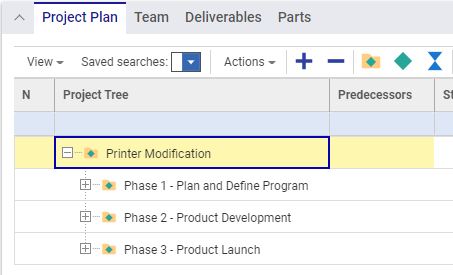Work Breakdown Structure (WBS)
WBS is defined as Work Breakdown Structure. The WBS is an element directly under the root in the Project tree, and it contains other elements such as activities, milestones, and even nested WBSs. The purpose of WBSs is to allow the user to break down the project into manageable pieces or phases, represented by the WBS, where each one has a distinct deliverable. In the case of Milestone scheduling, each WBS should be assigned a phase, with at least one milestone in it. WBSs can also be nested. Here is an example of what a Project structure could look like:

While the WBS might have deliverables associated with it, its schedule is derived from the schedule of the activities and milestones that it contains. So, for example, if a WBS contains one activity whose start date is today and end date is tomorrow, then the WBS start date is today and the end date would be tomorrow. Its metrics, such as the % complete, or how close it is to schedule, are rolled up values from the values of contained activities and milestones.
The WBSs immediately below the root level are represented as phases at Project level. For example, take a look at the tree structure below. Notice that there are 3 main phases (plus root) in this Project:

These three main phases are reflected in the Project header as well, once the project is promoted to an active state:

Thus, the Project Manager has a good view of the overall progress of each phase just by glancing at the progress of the WBSs.